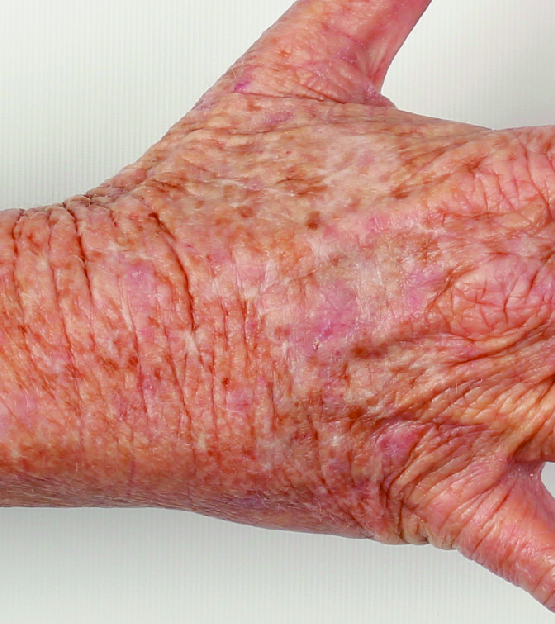Actinic keratosis, commonly referred to as AK, is a skin condition characterized by rough, scaly patches or lesions caused by prolonged exposure to ultraviolet (UV) radiation, typically from the sun. These lesions are commonly found on sun-exposed areas such as the face, scalp, arms, and hands. While actinic keratosis is often harmless, it has the potential to progress into skin cancer if left untreated. Let's delve into Actinic Keratosis Treatment in Dubai.
The Importance of Treating Actinic Keratosis on Hands
Actinic keratosis on the hands can be particularly bothersome and cosmetically concerning for individuals. Hands are constantly exposed to the sun's harmful rays during daily activities, leading to an increased risk of developing these precancerous lesions. Moreover, the hands are one of the most visible parts of the body, making the presence of actinic keratosis lesions more noticeable and potentially impacting self-esteem and confidence.
Traditional Treatment Approaches
Historically, treatment options for actinic keratosis on the hands have included cryotherapy (freezing), topical medications such as 5-fluorouracil (5-FU) or imiquimod, and surgical procedures like curettage and electrodesiccation. While these methods have shown efficacy in removing visible lesions, they may be associated with discomfort, prolonged healing times, and potential scarring.
Introducing Photodynamic Therapy (PDT)
Photodynamic therapy (PDT) has emerged as a promising alternative for the treatment of Actinic Keratosis on Hands. This non-invasive procedure utilizes a combination of a photosensitizing agent and light to selectively target and destroy abnormal cells while minimizing damage to surrounding healthy tissue.
How PDT Works
The process begins with the application of a photosensitizing agent, typically a topical medication such as aminolevulinic acid (ALA) or methyl aminolevulinate (MAL), to the affected area on the hands. Over time, the photosensitizing agent is absorbed by the abnormal cells within the actinic keratosis lesions.
Once an adequate amount of the photosensitizer has been absorbed, the affected area is exposed to a specific wavelength of light, typically blue or red light, depending on the type of photosensitizer used. This activates the photosensitizer, causing it to produce reactive oxygen species that selectively destroy the abnormal cells while leaving healthy tissue unharmed.
Advantages of PDT for Actinic Keratosis on Hands
Precision Targeting
One of the key advantages of PDT is its ability to precisely target and destroy actinic keratosis lesions without damaging surrounding healthy tissue. This targeted approach minimizes the risk of scarring and other adverse effects commonly associated with traditional treatment methods.
Minimal Downtime
Unlike surgical procedures, which may require downtime for healing, PDT typically involves minimal to no downtime. Patients can resume their normal activities immediately following treatment, making it a convenient option for individuals with busy lifestyles.
Cosmetic Benefits
PDT not only effectively treats actinic keratosis lesions but can also improve the overall appearance and texture of the skin on the hands. Many patients report smoother, healthier-looking skin following PDT treatment, enhancing both cosmetic and functional outcomes.
Conclusion
Photodynamic therapy (PDT) offers a safe, effective, and minimally invasive treatment option for actinic keratosis on the hands. By selectively targeting and destroying abnormal cells while preserving healthy tissue, PDT provides patients with a favorable cosmetic outcome and minimal downtime. If you're seeking an alternative to traditional treatment methods for actinic keratosis on your hands, consider consulting with a dermatologist to determine if PDT is right for you. Remember, early detection and treatment are key to preventing the progression of actinic keratosis to skin cancer.
Read More About: Actinic Keratosis Cost in Dubai





Comments